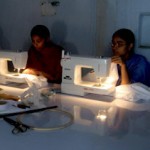18th July 2012 New Delhi, India
Innovation Redefined – India’s story
Science and Innovation history in India dates back to the Stone Age and continues to flourish today passing through generations of scientists. From Aryabhatta to C V Raman to the new brigade of scientists; the outlook of science has constantly changed to align itself with the ever changing domestic and global environment.
Governments, businesses, civil society across the world recognise the importance of innovation in meeting global challenges confronting the world. Innovation and its interplay with S&T open fresh perspectives on ways to create a better world. This poses an intriguing challenge for us: how to understand the changing landscape of India’s innovation paradigm, how could it shape the world and how can UK contribute and learn from India’s innovation strategy? While there is no easy answer to these questions, a new report in which S&IN India has been involved makes a significant contribution.
 A year ago, an enthusiastic team from S&IN, Research Councils UK, UK-India Education and Research Initiative (UKIERI) and National Endowment for Science Technology and the Arts (NESTA) joined hands to find an answer to these questions. With the aim set, scope defined, and timelines drawn, it was hard to know at the onset where this report would lead us. For example, had we explored all the major hot spots for innovation in the past, or were there emerging centres of excellence in research we hadn’t heard of? And which of them already had extensive ties with the UK?
A year ago, an enthusiastic team from S&IN, Research Councils UK, UK-India Education and Research Initiative (UKIERI) and National Endowment for Science Technology and the Arts (NESTA) joined hands to find an answer to these questions. With the aim set, scope defined, and timelines drawn, it was hard to know at the onset where this report would lead us. For example, had we explored all the major hot spots for innovation in the past, or were there emerging centres of excellence in research we hadn’t heard of? And which of them already had extensive ties with the UK?
The research, led by the project team in NESTA, included more than 120 in-depth interviews with intellectuals, field trips to various cities across India, scanning hundreds of reports, articles, and journals. Expertise and opinion were drawn from a large group of stakeholders including researchers, universities, policy makers, business guru’s, not for profit institutions. Regular debates, discussions and analysis accompanied the research which culminated in the first draft. This was shared widely with the stakeholders and the findings were debated vigorously before being signed off.
The report has tried to map the changing landscape of science and innovation in India whilst exploring topics like:
- What is the emerging picture of Indian science and innovation capabilities?
- Frugal Innovation – What does it mean? And demystifying myths surrounding it.
- Hidden innovation in services and business models
- Implications and lessons for the rest of the world
Whilst reading drafts of the report and background material, I’ve encountered striking examples of new science and innovation frontiers in India. And as someone who has seen a jugaad approach applied to many aspects of daily life, I was intrigued by the section on how this mind set is being scaled up into innovative business models and products. I was particularly impressed by the low cost ECG machine developed by GE. I’d encourage any interested reader to dig deeper than the report and look at some of the background and additional research, such as the bibliometrics studies and or paper on FDI in R&D.
We hope the findings and recommendations will serve as a great starting point for broader discussions among stakeholders. What started as a quest to find an answer to ‘a question’ has left us more enthusiastic to dig deeper and explore the findings of the report in future.
You can download a copy of the report here. Please give us your feedback or email Nesta with your thoughts.
We plan to hold a launch event of the report in UK and India later this year.
1 comment on “Innovation Redefined – India’s story”
Comments are closed.